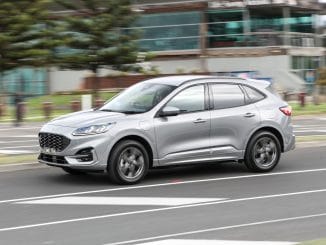a href=”http://egfcvm47j5c.exactdn.com/wp-content/uploads/2012/02/Toyota-Yaris-12-release-ext-model-range1.jpg”>
This is the third generation of the Yaris and Toyota believes it is so good that it will take sales from the opposition. That’s a bold claim. Previously the Yaris has majored in bulletproof reliability, a spacious well-built cabin, a strong range of economical engines and low running costs. Add to this sharper styling and some of the best resale in the class and it should do well. Is it good enough to be the best in class? Let’s check it out:
Behind the wheel
 < Jump inside and you’ll see that the cabin has been completely reworked. It is now much more driver-focused with the dials and instruments behind the steering-wheel. This is the first time in the Yaris’ history that the speedometer and rev counter has been placed behind the steering wheel rather than in the middle of the dashboard. The unfussy dash layout is a massive step forward and it incorporates an integrated touchscreen system at the heart of the design. The YR (base model) comes with air conditioning, power windows, power mirrors, a four-speaker sound system with CD player, USB connectivity and Bluetooth streaming. Cruise control is also optional for an additional $650.
Performance
The powertrains remain the most underwhelming aspect of the new car. The 63kW/121Nm 1.3-litre and 80kW/141Nm 1.5-litre are adequate in isolation, but performance is dampened by a four-speed automatic gearbox, putting Yaris at a disadvantage compared with rivals that have five gears or more in their automatic gearboxes. Above 3000rpm, both of these engines feel lively, but let them drop below 3000rpm and they are non-responsive.
Handling
The new Yaris is 20kg lighter than the previous model, with local tuning to the electric steering calibration means that the Yaris is truly impressive in the city but feels vague on the open road with little feedback for enthusiastic drivers. The handling should be helped thanks to the car being wider and longer (compared to the older model it’s 15mm wider and 100mm longer), our test route took us on motorways, twisting dirt roads and a drive up the Rob Roy Hill Climb in Victoria. Toyota claims Australian versions of the Yaris will come with local ride and handling set-up, with retuned suspension bushes and dampers, and a quicker steering rack. The steering feedback on a twisting track is impressive for a car in this market and price.
Comfort
The increase in length has freed up space for passengers, making trips more relaxing and comfortable. Compared to rivals the Yaris feels quite roomy. Two adults should fit in the rear seats quite comfortably but if you are planning longer journeys it is best to reserve the rear for teenagers or children. Comfort is good up front, but the seats could be better bolstered to improve lower back support. Road, tyre and wind noise is relatively low for a car of this size.
< Jump inside and you’ll see that the cabin has been completely reworked. It is now much more driver-focused with the dials and instruments behind the steering-wheel. This is the first time in the Yaris’ history that the speedometer and rev counter has been placed behind the steering wheel rather than in the middle of the dashboard. The unfussy dash layout is a massive step forward and it incorporates an integrated touchscreen system at the heart of the design. The YR (base model) comes with air conditioning, power windows, power mirrors, a four-speaker sound system with CD player, USB connectivity and Bluetooth streaming. Cruise control is also optional for an additional $650.
Performance
The powertrains remain the most underwhelming aspect of the new car. The 63kW/121Nm 1.3-litre and 80kW/141Nm 1.5-litre are adequate in isolation, but performance is dampened by a four-speed automatic gearbox, putting Yaris at a disadvantage compared with rivals that have five gears or more in their automatic gearboxes. Above 3000rpm, both of these engines feel lively, but let them drop below 3000rpm and they are non-responsive.
Handling
The new Yaris is 20kg lighter than the previous model, with local tuning to the electric steering calibration means that the Yaris is truly impressive in the city but feels vague on the open road with little feedback for enthusiastic drivers. The handling should be helped thanks to the car being wider and longer (compared to the older model it’s 15mm wider and 100mm longer), our test route took us on motorways, twisting dirt roads and a drive up the Rob Roy Hill Climb in Victoria. Toyota claims Australian versions of the Yaris will come with local ride and handling set-up, with retuned suspension bushes and dampers, and a quicker steering rack. The steering feedback on a twisting track is impressive for a car in this market and price.
Comfort
The increase in length has freed up space for passengers, making trips more relaxing and comfortable. Compared to rivals the Yaris feels quite roomy. Two adults should fit in the rear seats quite comfortably but if you are planning longer journeys it is best to reserve the rear for teenagers or children. Comfort is good up front, but the seats could be better bolstered to improve lower back support. Road, tyre and wind noise is relatively low for a car of this size.

Copyright © 2025 | MH Magazine WordPress Theme by MH Themes




